_______________

‘With Alice Knott (Riverhead Books), Blake Butler’s fourth novel, the book feels like it is built not into chapters or direct scenes but rather touring the synapses as we chart every corner of the eponymous main character’s psyche. “I don’t think art exists as a concept separate from flesh,” Butler muses, when asked about the destruction of art, the main theme of the new novel. “We live in a society entirely co-opted by criminals and the demented, setting us up to exist sick, alone and unaware of what the difference between sugar and shit is. Soon even death won’t be the end of it, if we don’t start thinking ahead.”
‘And that is exactly what underlines the narrative surrounding Alice Knott: Art is existence and existence has been co-opted by a society trained to devalue its qualities.
‘The eponymously named Alice Knott is a reclusive heiress living in a secluded mansion where she obsesses over art, and particularly collecting expensive art. By using her vast monetary inheritance to buy the art, her obsession acts as defiance, the taking of currency and finding a solid, tangible object from which she can see, touch, and observe. All is well until a group of people break into her house, not to steal but rather to destroy some art. They film the destruction and upload it online. The video goes viral and starts a trend of copycats, everyone going around and destroying art.
‘It is a compelling and frightening concept, one that Butler battles on the page with ease. The novel demonstrates Butler stepping out of the personal to explore the central madness of a culture-drenched, social-media driven society. …
‘Alice Knott uses language to carve through the darkness. Here, like with his earlier work (Ever, Scorch Atlas) and his last novel, Three Hundred Million, Butler has proven himself to be a cartographer of the psyche. A camera pointed on masked individuals drenching a painting with kerosene before setting a match to it; the modern American home, idyllic and clandestine on its exterior while inside, familiar spaces like bedrooms become warzones, morphing and shifting like a body flexing and contorting: These are the sorts of images that Butler leaves behind in your mind, never to be erased. Perhaps we can learn from him and embrace it, facing our fears instead tweeting out more performance and false positivity.’ — Michael Seidlinger
Blake Butler Site
An Interview with Blake Butler @ The Believer
Audio: Alice Knott by Blake Butler, read by Kirsten Potter
Blake Butler @ Twitter
Buy ‘Alice Knott’
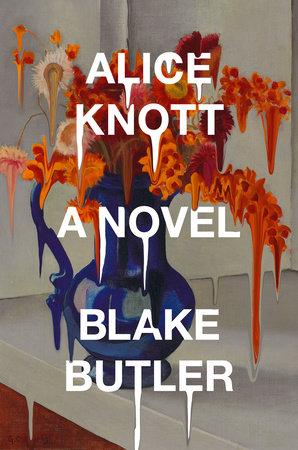 Blake Butler Alice Knott
Blake Butler Alice Knott
Riverhead Books
‘Alice Knott lives alone, a reclusive heiress haunted by memories of her deceased parents and mysterious near-identical brother. Much of her family’s fortune has been spent on a world-class collection of artwork, which she stores in a vault in her lonely, cavernous house. One day, she awakens to find the artwork destroyed, the act of vandalism captured in a viral video that soon triggers a rash of copycat incidents. As more videos follow and the world’s most priceless works of art are destroyed one by one, Alice finds that she has become the chief suspect in an international conspiracy—even as her psyche becomes a shadowed landscape of childhood demons and cognitive disorder.
‘Unsettling, almost physically immersive, Alice Knott is a virtuoso exploration of the meaning of art and the lasting afterlife of trauma, as well as a deeply humane portrait of a woman whose trials feel both apocalyptic and universal.’ — Riverhead Books
Excerpt
The video begins with an establishing shot of a famous painting, hanging alone on a wall of white. The camera is clearly handheld, a feature divulged by its framing’s subtle waver, rather informal given the context of the forthcoming recorded act. And though the footage bears no titles, no credits, many will immediately recognize its featured image as Woman III, a work of oil on canvas composed by Willem de Kooning, according to records, in 1953.
In the painting, a sprawl of subdued color-gray, gold, blue-forms an abstract female figure shown head-on: breasts like blunted pyramids, braced beneath shoulders so broad no ambulant human could hold them upright. Mangled, muddy hips bracket the focus of her crudely rendered crotch, outsized in turn by massive, jagged hands slung to her knees. Atop it all, the woman’s diminutive face, a landscape of moon dirt, leers slyly toward the viewer, as if aware of something inevitable none among us might wish to know.
The original version of the video, unlike the truncated one eventually most widely shared by news media, allows one full minute elapsed in silence, a last glimpse of the object without suggestion of its fate. In later edits, this buildup will be cut, plunging the viewer headlong into action without preamble, for there is little time to waste.
Likewise, not until after the video has been shared online more than seven million times-a reach accrued in less than three nights following its debut-will any major news source link the painting’s fate to a related story several weeks prior, wherein said work had been reported stolen from the primary residence of its last known owner, an aging heiress by the name of Alice Knott.
Regardless of preamble, in any version of the video, a pair of masked figures eventually appears, coming in on each side of the painting from offscreen. They are dressed identically, in stark white hooded work suits that obscure their hands and faces. Together they lift the painting off the wall, turn it over flat, and hold it still, yielding no sound but the low, ambient buzz of a hot mic recording nothing.
The camera tracks the figures as they carry the painting across the room, revealing the edges of a much wider empty space, buttressed on its far end by a small formal audience seated together on silver bleachers: six men and six women, each dressed in stately fashion; the men in tuxedos, the women in gowns, the cloth of their garments as stark white as the walls are in surrounding, as if they’ve meant to blend into the space. These spectators’ faces have each been digitally obscured, leaving only a warble of busy pixels where their features might have named them. Together they look on, calm as lambs, as the painting is placed faceup before them upon a small raised platform, like a patient, of no nature to do anything but wait-a condition matching ours, the viewers’, as what we are seeing is in the past, already happened, including all as yet to come.
The camera pans then to assume the perspective of the attendees, divorcing their physical image altogether out of the shot, taking again as its primary focus the fate of the painting. There is a lingering beat, poised upon the object, in which it seems this point of pause could last forever, fill the duration of our lives with its soft looming, though, then, why exactly are we here? What are we meant to be receiving? The drift between each question and its answer spans the absence until, startlingly, against the silence, the soundtrack lurches to life: a high-treble, jarring pink noise, like a blister splitting over and over, emitting a monotone barrage of high-end squall that overrides all other possible audio in full, so much like the wide white walls that fill the space, as if to press the monotonicity of surfaces surrounding the painting through the speakers of the spectators at home.
And then, again, this time from behind and to the left of the camera, a human figure appears onscreen. This one, though, unlike the others, is wearing a chrome-lined pack strapped to its back, from which a long slim chrome nozzle extends to be wielded by the wearer, and then, from that, the bright eye of a blue node of focused flame.
The figure moves to stand over the painting at its head. They adjust a setting on the device, causing the bud of light to grow almost a foot long, the corresponding aural furor likewise intensifying, as if to permeate the viewers’ concentration.
The figure proceeds to apply then the ember of the burning to the work.
The incineration begins along the canvas’s upper left-hand edge, instantaneously eating into and through the paint wherever it is made to touch; such that during the interface the image becomes obliterated-each mark undone from its original instatement at the hand of the artist, himself expired and cremated; each inch of the creation that had survived him rendered unto ashes as the steadfast neon eye continues across its face without relent, quadrant by quadrant, stroke by stroke.
The rest is simple math, an eventuality rather than a wonder. The bright and rising buds of fire suggest some wilder version of the painting, unlock from within it some charisma of a kind that could once have been borne from a culture’s total fear of its creator. The flame is thin and wide and asks no questions. The total annihilation requires little time-the image turned to absence without so much as a whimper, any word, nothing to restrict its path to full annulment, leaving behind only loose cinder and a disseminating smoke that curls and rises from the focal point of its destruction, into thin air, as we all breathe.
At no point is any distinctive feature of the obliterator made apparent seen onscreen; only the assured, surgical attention of a person performing an assigned chore, with the same poise as one might have washing a window, digging a hole.
The destruction is beautiful itself, too, some viewers will argue, in its own way; how the flat, detached tone of the recording stands so firmly apart from its reality’s steep expense-that is, not only the $137.5 million Woman III had once commanded at auction, setting a record for the contemporary era, then breaking its own mark again a decade later in private sale to the estate of someone by the name of Alice Knott for an even more ungodly sum; but also, obviously, the permanent elimination of the existence of the work. We can already hardly remember what the painting resembled beyond fragments, many will soon find, even amid the countless replications of its likeness in archive left behind; no single feature strong enough to override our fresh perception of the char that’s been impressed upon our senses as the recording ends and we remain outside it, and there is only then the screen, at once and suddenly blank.
What did we just witness? Why had it happened? Who would have sponsored such a thing? There are, of course, no direct answers, at least none made public, and the absence results in a sprawl of theory and debate, sprung from fact into philosophy, unto exhaustion on all sides. Perhaps the video is no more than some strange hoax, some posit, a camera trick designed to stir reaction, mass attention-if so, in fact, a job well done. But to what end, and for whom? What even can be said to have been forfeited, others will ask, beyond dollars and cents; how much different, without one such image among innumerable others, could our world yet really be?
What’s not debated is how within two weeks of its original appearance online-uploaded by an anonymous user under the handle 0edipa0apide0, thereafter shared and copied countless times-the video of the obliteration of Woman III amasses more than thirty-seven million views. Attempts to ban the video from being hosted at various sites by the request of certain legal and preservation-focused entities, citing terms-of-service violation on the eventually discounted grounds of copyright infringement and even explicit content, do little more than incite further growth, as its replicating presence looms and winds, spurred forward by countless outlets responding in tones ranging from curiosity to horror, from deep regret to uncanny joy-a discursive heat within which there very quickly seems no center, like a snuff film, an act carried out against the state of human aspiration in and of itself; as what had we lived for, some conversation’s final word might yet project, if not for evidence of something sacred allowed among us, let alone within us, in pursuit of which we so often go nowhere but in circles.
Alice Knott, unlike so much else, is not at all difficult to find. She hasn’t left her house in years, a fact she offers freely, loudly, to the cameras gathered at her door, seeking comment from the destroyed painting’s final owner. She had even been home during the night of the theft, or so she claims. The spoils of that night, according to the official police report, included not only the now apparently vanquished de Kooning but several other works possessed by her estate. She’s lucky just to be alive, she might imagine; had they killed her during the job, she wouldn’t be standing here, sweating in humid daylight, left anticipating some other future way to die.
Extras
Virtual Book Launch: Alice Knott by Blake Butler
The Virtual Franklin Park Reading Series: Blake Butler, Tracy O’Neill, Maisy Card, and Ashleigh Bryant Phillips
_______________

‘Elisa Taber is a writer and anthropologist. She explores the interstice between translation and epistemology in the Nivaklé narratives of the Paraguayan Gran Chaco. Both her stories and translations are troubled into being, even when that trouble is a kind of joy.
‘In 2013 and 2016 she conducted fieldwork in Neuland, a Mennonite colony in the Paraguayan Gran Chaco, and Cayim ô Clim, the neighboring Nivaklé indigenous settlement. Her hyper-textual lyric ethnography is composed of two multi-sequential sections. The second is an ekphrastic description of 30 second films shot in Neuland and Cayim ô Clim. The first is a metonymic translation of myths from a mixture of Machaco, Guaraní and Spanish into English.
‘Elisa graduated from The New School Social Research with a Master of Arts in Anthropology. She currently serves as Editorial Assistant for the Curatorial Design Research Lab at Parsons, The New School for Design.’ — arts letters & numbers
Excerpt: ‘An Archipelago in a Landlocked Island’
Elisa Ayerza Taber @ Twitter
Elisa Taber @ goodreads
Al Ras — Elisa Taber
Preorder ‘An Archipelago in a Landlocked Country’
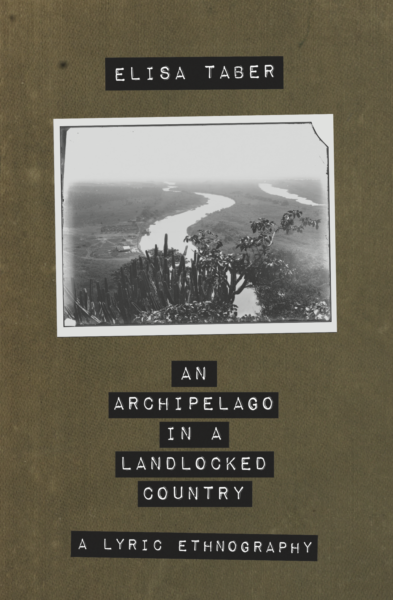 Elisa Taber An Archipelago in a Landlocked Country
Elisa Taber An Archipelago in a Landlocked Country
11:11 Press
‘An Archipelago in a Landlocked Country is the lyrical storytelling of fieldwork conducted in Neuland, a Mennonite colony in Paraguay’s Boquerón department, and Cayim ô Clim, the neighboring Nivaklé settlement. The author was conceived in Neuland in 1990 and returned in 2013 and in 2016.
‘This multi-sequentially read book shifts in genre from ekphrastic descriptions of 30-second films shot in Asunción, Filadelfia, and Neuland Paraguay; to a collection of short stories inspired by metonymically translated Nivaklé myths; and finally, a novella that mythologizes the life of a third generation Mennonite woman.
These three parts are not meant to be read in order. The hypertext gestures towards the omitted films and translations. This structure attunes readers to absent presences. The author’s narratives render other kinds of realities—Nivaklé, Paraguayan, and Mennonite ways of being made over—and her own. This “unweaving” technique is inspired by Ñandutí—a spider web pattern created by unraveling threads from a piece of fabric.’ — 11:11 Press
Excerpt
Loose sand seals the holes in the hard dirt road. Pale flesh colored grains float like particles of air grown tangible. They hit a barrier and accumulate in mounds at the foot. Each grain, separate. They move in unison.
Angel watches them seep in under the heavy wooden front door to his home. In the hollow space between those four walls it grows into a cloud. Fills the space within or between his possessions. This room is not empty.
A grey film coats his bed, television and desk. Dust unlike sand is a nearly invisible lining. Run the fleshy underside of your finger across a tile to trace a line. Rubbing index against thumb feel the once dry substance turn sticky like the grease on your stove.
He sits on the floor before his low desk. A long ply-wood bench. Two piles of paper on either end. Scribbled on both are things he cannot forget. Those to his left are reminders, tasks. To his right, memories. What he does fills his days. What he remembers, his nights.
The slip in his hand flickers on a memory as vivid as the scene playing on the lit television behind him. A portable set like those in a highway toll attendant’s booth. In the dark, the sun starting to burn through drawn curtains is still too dim, the screen floods the room with steel fluorescent light.
Past midnight the national TV station streams, La Burrerita de Ypacaraí. A large breasted woman sits atop a donkey. Her lips and dress are the same shade of crimson and the sky is a phosphorescent blue. The film must have been black and white, then colored by hand.
“The day Belen died,” is the mnemonic sentence inscribed on that slip. Smudges of led where the pencil indented with intent. He remembers the facts but not her body or face. She remains fifteen years old and five foot four inches tall.
He watched the girl wait. She stood by the bus stop before the only wall enclosed home in Cayim ô Clim. It cast a shadow on the lawn within, rather than on her. The sun shined on her forehead like a bird fluttering in place. She did not seem to notice it because it did not shine in her eyes.
There was a bang. She turned to face incoming traffic. The noise came from within the brick structure she leaned on. Behind it stood a wide one-story home, a fountain that was the stature of a girl, and a parked red car. The man in the front seat has just reversed into the wall.
Like thunder precedes lightning the sound foreshadowed the fall. First the wall trembled and regained stillness. Then it collapsed. The bricks fell forth, separating from each other, struck the sidewalk or something hard. They disintegrated.
Only the base remained. A barrier tall enough to bar the entrance of rodents and cockroaches. Mice can make themselves small enough to enter through a window slightly ajar, a pipe with one end in a ditch and the other in a tub, a crack in a wall.
The cloud of crumbled bricks and the cement between them settled. The home behind the inch-high barrier was exposed. As fragile as a house of popsicle sticks. The bars on the windows remained strong. They stripped the floral drapes of their joy.
The fountain ridiculed the pile of rubble. It endured. The statue’s puckered mouth seeped water. Her thick arms still held the folding cloth that both covered and revealed her form. A moth stood on her big hairless stone toe.
Water sprinkled on its opaque but nearly translucent wings. She neither fluttered them dry nor allowed them to droop by her sides. Anything could pierce the moistened frail material. Nothing did. Particles of cement clung to the wings, making them hard.
The debris coated car concealed its occupant. Everything was still. He remained within.
He was not mourning the cost of rebuilding the wall. The door was jammed. He was squinting through the grey coating on the rear window.
Figures gathered on the sidewalk opposite his home. The words they uttered were unintelligible. Their faces indiscernible. Perhaps they were speechless, staring.
The first to arrive picked the girl from the rubble. Belen resembled a statue. Her clothes, hair and flesh were covered in fragments of rock. Hers was a dead weight. But nimbler than stone.
One held her by the armpits. The other parted her legs to grasp her knees. Arms and calves dangled. Lower back and bum curved towards the floor. The mangled body swayed as they raced to the Mennonite hospital. More harm done on the way.
She did not grimace or wail with pain. Her eyes were large and her mouth open. She seemed to see more and breathe deeper than before. “The face of a saint or an angel,” her mother said. Not that of a girl who hugged and tugged at those she loved till they struck her still.
Her mother called her la mimosa arisca. Her siblings called her cowardly. She expressed affection persistently and spontaneously but winced when others reciprocated. The desire for touch got her in trouble. Her fear got her out.
She held the hand of the girl sitting beside her in class, combed back the hair of a disheveled neighbor, stroked the back of the hand of a stranger who rested it on the supermarket counter. They all peered back at her. Each time, she pulled away and ran.
Belen filled the cracks in the walls of her home with notes. After she died they started to find them. Tugged on the diminutively folded pages by indenting index and thumbnail into the paper. With it emerged an exhale of dust.
The one for her sister read, “I love you though you are cruel when we are alone.” Her brother’s, “I love you though you ignore me at school and at home.” The one dedicated to her mother was private. It read, “I love you most of all.” She continued expressing affection and disabling reciprocation posthumously.
The crowd continued to gather before the collapsed wall. The corners of the bricks remained whole. The interior disintegrated into an inhalable powder. It stuck to the lining of their lungs. It covered the slim corpse before it was parsed out of its mold.
They gathered to see the depression her body left in the rubble. Legs touching. Hands open by her hips. A tiny head. The wall crumbled upon striking her hard bones. It killed her but took on her shape.
The bricks were old. Particles were compacted but did not adhere to each other. If struck with an axe the blade did not break and the stone did not part in two but crumbled. With the blow of the car’s steel bumper, propelled back by rolling wheels, they came apart.
Crumbled cement and fragments of burgundy bricks atop loose sand and compacted red soil. Those that pass the site of the accident, stare. They match the color to the source. Cement and sand; soil and stone, do not match the brown and grey tones of their elements.
They make a red as deep as the black sea water far offshore. You do not feel the pull to fall when you peer in. As opaque as the ephemeral clouds that float away with sand and cement. You do not imagine shapes in the soil like you would in the sky. The first is tangible.
Extras
Neuland 6VID00129
Neuland 1VID00025
_______________

‘My own poetics is perhaps located somewhere between what Joyelle once called New Decadence and an anthropogenic literary imagination similar to what David Farrier describes in Anthropocene Poetics:
“[…] I follow the prompting of Neimanis and Walker to explore the thickening of the present as a point of confluence between deep pasts and deep futures. This viscosity – devolved across species and objects, as well as the divisions of place, time, culture, ethnicity, gender, sexuality, and capital that carve up the anthropos – is the basis for a new and necessary imaginative project, a world-making for the Anthropocence, in Deborah Bird Rose’s sense of becoming with others, and of Earth itself as a work-in-progress. Intimacy allows us to imagine worlds of possibility; whether in terms of texture, sensuality, or violence, intimacy achieves a form of knowledge in the traffic between entities”.
‘I feel like I have a deeply intimate understanding of my mortality (maybe it could be called a thanatopic intimacy) when it comes to our ailing, carved up planet. Lodged in the present, I feel like a Decadent in the same way some artists think of themselves as avant-garde. Not in the historical sense obviously. The ‘avant-garde’ is not necessarily a historically fixed phenomenon and I believe the same is true of Decadence. Ideologically, the Decadence of those arsenic-yellow 1890s feels reminiscent of the Graveyard Poets of the eighteenth century. I feel like all of these things – a Decadent, a Graveyard Poet, etc.
‘And what about the Gothic?
‘For instance, is Wilde’s Picture of Dorian Gray a Decadent novel or a Gothic novel? The distinction doesn’t really mater to me and I appreciate that the lines get blurred. I believe the Gothic is an ancestor of Decadence. Either way, excess lives on. Undead. Zombie-like.
‘I appreciate, most of all, that Decadence was not planned or born out of an institution. It came without instructions or a formal rubric. It was something viral, contagious.
‘You just wake up one day and suddenly – like it or not – you’re wearing a Mask.’ — Paul Cunningham
Paul Cunningham Site
In Conversation with Paul Cunningham
We Are Decadent Again
Paul Cunningham @ Twitter
Buy ‘The House of the Tree of Sores’
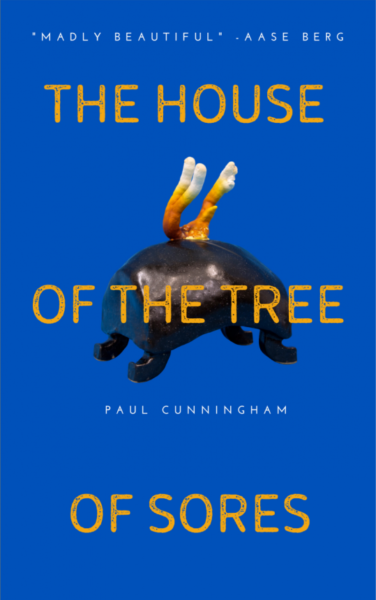 Paul Cunningham The House of The Tree of Sores
Paul Cunningham The House of The Tree of Sores
Schism 2 Press
‘To enter Paul Cunningham’s insidious home environment is to enter as a stranger, into his own perverse version of normalcy. With an equally deranged and seamless mix of Swedish and English, he reveals both the reader and the IKEA department store as eerie card houses or scenes, as mirror-rooms and kaleidoscopes. A madly beautiful and deeply disturbing book!’ — Aase Berg
‘The House of the Tree of Sores is made of experimental, fable-like poems tightly woven with Swedish-English translingual word plays that mock and counter-weave America’s imperial English, its values and lifestyle so deeply entrenched in global economy and violence. It’s a stunning debut that only a translator-poet could have written — Paul Cunningham.’ — Don Mee Choi
‘Paul Cunningham has an absolute page-turner here — maybe the rarest of things in poetry. The repetition is EXQUISITELY and MASTERFULLY executed. It’s one of the best things I have read in a long time.’ — CAConrad
Excerpt
I locate what looks like a blood-swathed section of shattered flooring, a crudhole where a darkening tree trunk swells. I witness trunkish pressure, compression. I see where former tentakel capillary vessels chafed and spewed their inner along and away from the jagged floorhole, I see slightly shredded pedal arteries still pumping. Charisma. A chiasma of nerve bundles, branched channels, fluid-dripping branches containing plant-like pustules. Some containing veinlines of a knife-edged green. Neuronal cytoplasm leaks from numerous growth wounds, crusts over, scabs. Weak contractions, respiratory rhythms. Tracts of rotten, deflated alveoli sway aimlessly around scabbed-over sections of rough bark. The coiling tree branches continuously, generates turning, tooth-like fibers. Grub-like musculature. The tree of sores possesses a stomach, the tree of sores possesses an esophagus. I stare at its tongue-like lobes of bark, I stare at its tiny, seemingly motorized teeth. I wait for the mouth, for the möter sounds. I wait, I listen as the sores slowly form.
I wait in the house of the tree of sores. The height-adjustable house of the tree of sores. I wait for its möter to start, for its many teeth to grind. I wade in the pulpish filth of the mosh pit of household objects, the mosh pit of grotesque möter skills. I spot a commercial proposition drooling in the corner of yet another fake room. My eyes, mutilated by household objects. I can’t see straight, I can’t—only a flickering series of lights in front of my suddenly failing eyes. On-Off-On-Off. I stage-dive, I head-bang. On-Off-On-Off. I can’t remember my name. I can’t remember my name, but I remember the names of my children. My children? What children? On-Off-On-Off.
I stand before a trunk of stains, a tree of sores. It quakes and it quakes, it makes mor möter sounds: Look at yourself, head-banger, why do you stand there, shivering, slurring coldly with your stupid flesh? Why are you neglecting your children? Why are you neglecting their eggs? The tree of sores quakes once more, suddenly pukes out a little cephalopodal something, a crochet kraken. I pick up the slimy crochet kraken, drenched in child-killing bacteria. I shoot the sharp-jawed tree a punkish grin. Eggs? I ask. Yes, you morgue-born head-banger, the tree answers. They’re lost and miming, pecking and performing the everyday gestures of this pop milieu, their pop’s mildew. Careful, crash-dummy, before you crash and burn! My body oddly bursts into flames, I drop the crochet kraken to the floor. I stop, drop, and roll. Hundreds of bumps of something crack loudly beneath my flaming roll. Ägg, ägg, ägg äggulor! ägg, ägg, ägg om, om, omelette, umm, umm, umlaut, a lot, a lot knocking, knocking, knäckt, cracking up. Cracking me up, I cry out.
Burnt bread, my bread body. Brödkavle, I keep rolling, I roll out my fires. I stare up at the tree, I stare up at the sores. I feel like a bruised roosthole, a local valve, a horahole, a horrorshow. I am up all night, blood flowing. A horhus, a hönshus. Am I hönhus? Hönsnät? Swells of my hen rolled away in the fire, I feel happy about this. But where are my children? Am I mor? Am I mother? Am I father? The lateral teeth of the tree clamp down onto my legs, sweeps my body inward. Are you their mother? Their mother tongue? Am I their mother? I ask. A channel of tied-together trash bags flap up and surround the fibrous trunk of the tree of sores. Lumen, vesicles of lens-generating tissue fills in. All over, all over. Makes, makes eyes. Eyes of light protrude from the trash bag channel of the tree of sores. Bags of swollen, of shit, of crud. I am up all night, blood flowing. I am swollen, I am shit, I am crud. I am mangled, head-banged through a kaffe table book’s table of malcontents.
Beak-first, a blue chicken emerges from the trash bag darkness. (My hand-drawn, henjawn little boy.) A yellow chicken emerges from the trash bag darkness. (My hand-drawn, henjawn little girl.) They are my cultish acolytes worn like clipped images, so BAZAAR!, cult prophets snarling, pecking, pipping. They are my children, they are my chickens. Egg-making, their assault on my language. I decide to embrace this bellicose, this ventricose vows. I am, now, ignited by translation aorta, blood system. Blood flows through my swollen caruncles, my crinkled lobe of a page.
Extras
THE HOUSE OF THE TREE OF SORES | Official Book Trailer
Alfred Hitchcock’s PSYCHO by Paul Cunningham
_______________
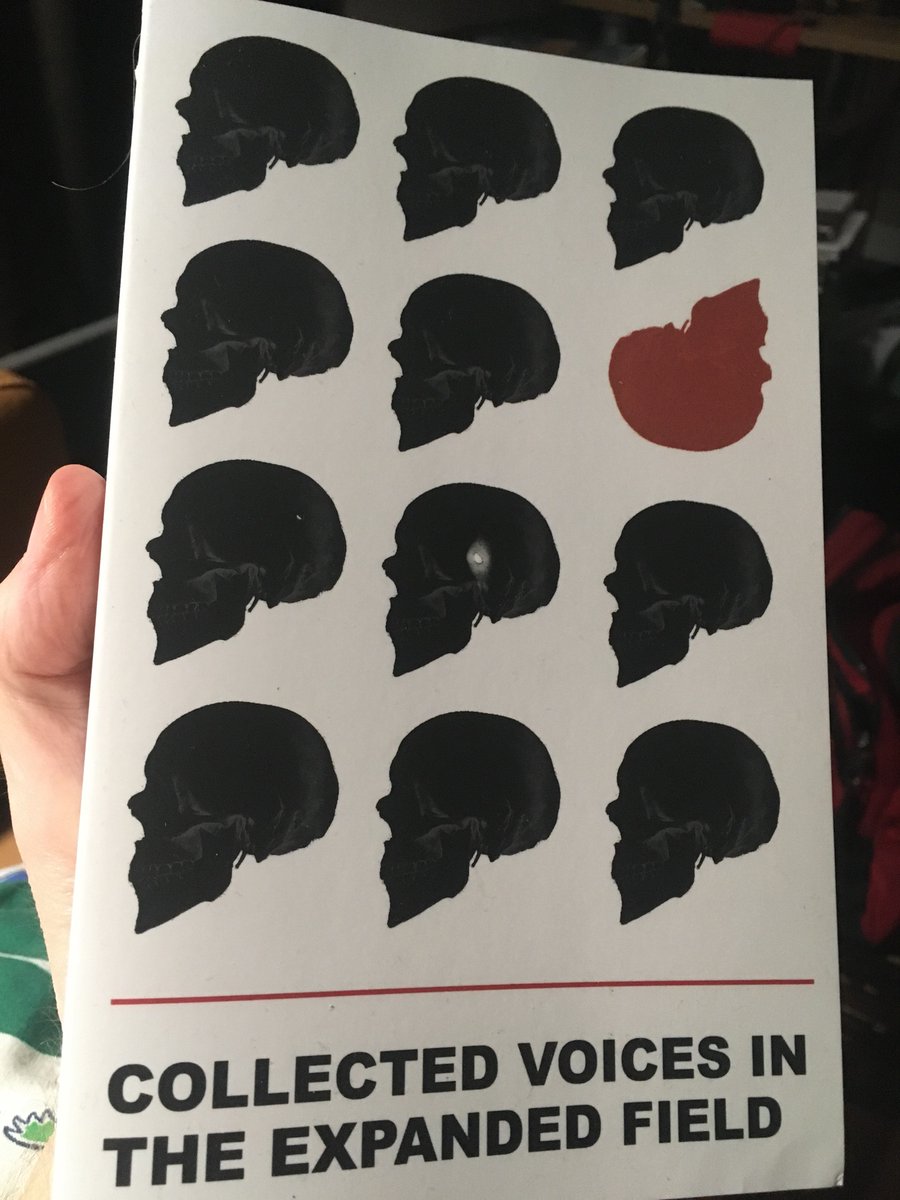
‘When Mike Corrao and 11:11 Press approached me about being included in Collected Voices in the Expanded Field, an upcoming “collectively-written novel,” there was no hesitation. Sign me up. I’m in.
‘And, untrue to who I at least like to believe I am at my core, I asked zero questions—because I had none. I’ve known Mike and the rest of the crew at 11:11 for years now. They consistently produce cool, unconventional projects that are accessible, but that also push boundaries. I trust their vision. I trust their professionalism. I trust their process. And because I knew I was in good hands, I felt enabled to have a lot of fun with the piece I ended up writing (which became Chapter 19 of the book).
‘I won’t go too, too far into the contents, including with my own chapter (because I really want you to pick yourself up a copy and dig into the brilliant experiments within), but to clarify what “collectively-written novel” means:
‘Each chapter is written by a different author, but begins with the same two sentences: “You see a watering hole. Reprieve from the old dusty path.”
‘Authors were allowed—encouraged, in fact—to take those two sentences wherever they wanted them to go, and to convey the text that emerged in whatever form they decided was best. The results are staggering, eye-opening, and, if you’re a writer, inspiring. Seriously, flip through this book and you’ll see the texts come to life. Free to flow this way or that, all the different formats, all those different choices made by the authors, really give the collective text an incredible amount of shape and texture.
‘Please, whether you’re reading to study, reading to escape, or anything in between, do yourself a favor and give this book a shot.
‘Lastly, from the publisher, because I find it both cool and important:
‘We are selling this book (nearly) “at cost” and expect profits after printing, shipping, and credit card fees to be under 20 cents (USD) per sale. We are spending roughly $400 on contributor copies and miscellaneous overhead costs. If you enjoy the book and would like us to do another project like this one, please consider making a contribution here. In the unlikely event that we cover all of our costs, we will put the surplus funds towards a second collectively written project.’ — Garrett Dennert
State of the Art #5: Andrew J. Wilt of 11:11 Press
CSitEF @ goodreads
11:11 Press @ Twitter
Interview with Andrew J. Wilt
Buy ‘Collected Voices in the Expanded Field’
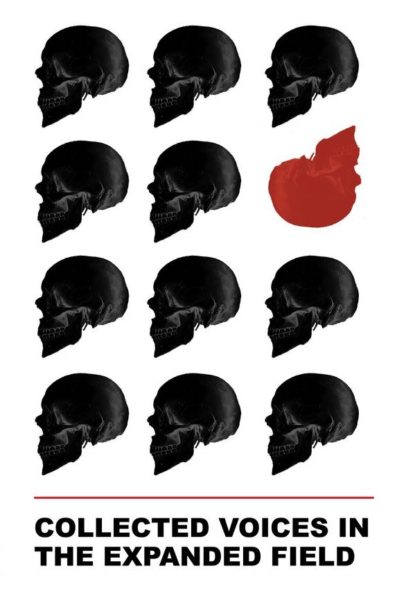 Various Collected Voices in the Expanded Field
Various Collected Voices in the Expanded Field
11:11 Press
‘Collected Voices in the Expanded Field is a collectively written novel composed of 34 unique voices from the expanded field.’ — 11:11
AUTHORS: Mike Corrao * Grant Maierhofer * B.R. Yeager * Elisa Taber * Garett Strickland * Mónica Belevan * Germán Sierra * Judson Hamilton * Rosie Snajdr * Tatiana Ryckman * Joshua Rothes * Ryan Napier * Joshua Young * Benjamin DeVos * A.S. Coomer * Nathan Dragon * James Tadd Adcox * Sean Kilpatrick * Garrett Dennert * James Nulick * Christina Tudor-Sideri * Ali Raz * Vincent James Perrone * Evan Isoline * David Leo Rice * Kenny Mooney * Tyler Crumrine * Arielle Tipa * Gary J Shipley * Adam Tedesco * Mike Kleine * Jake Reber * Candice Wuehle * Andrew J. Wilt
Excerpts
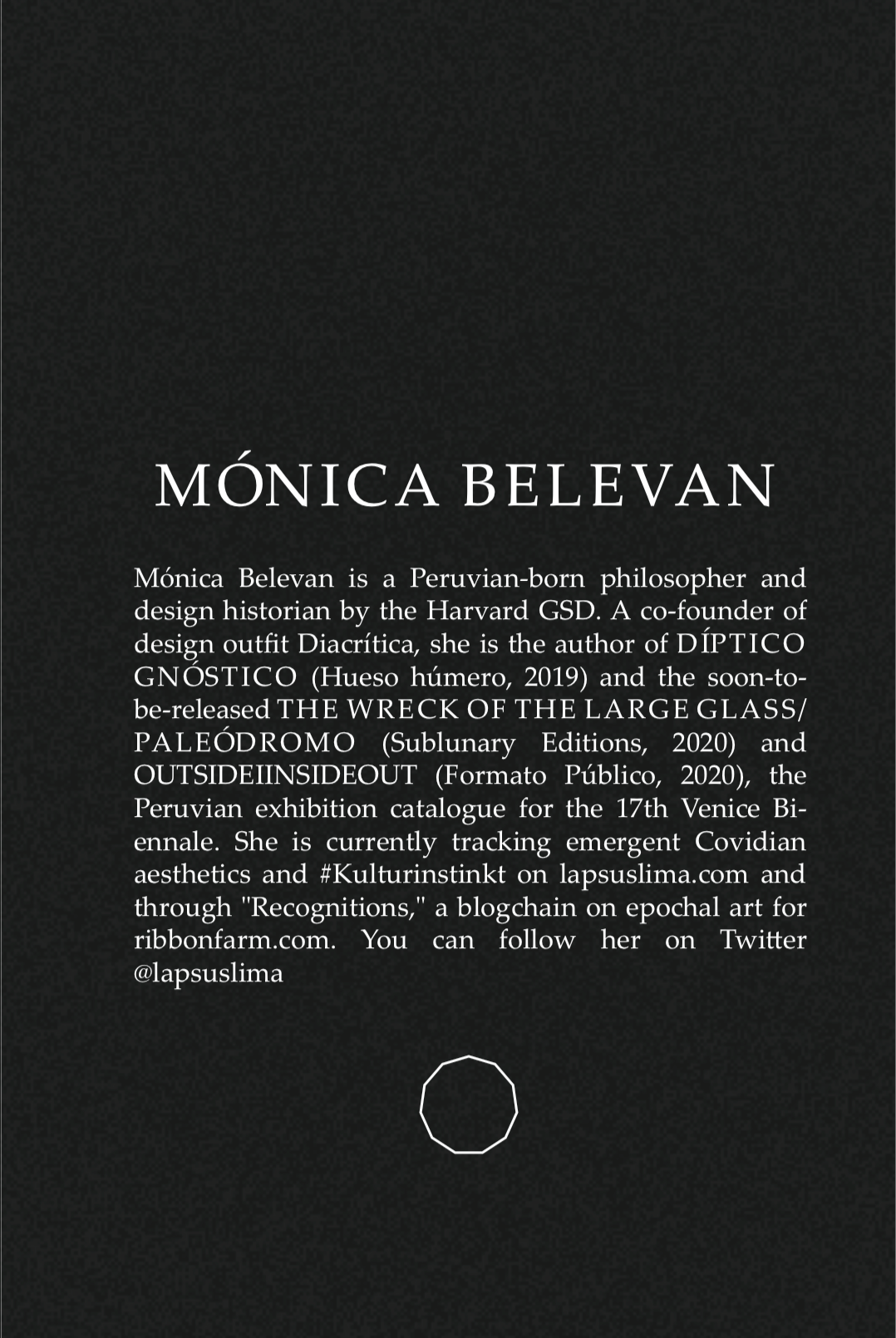
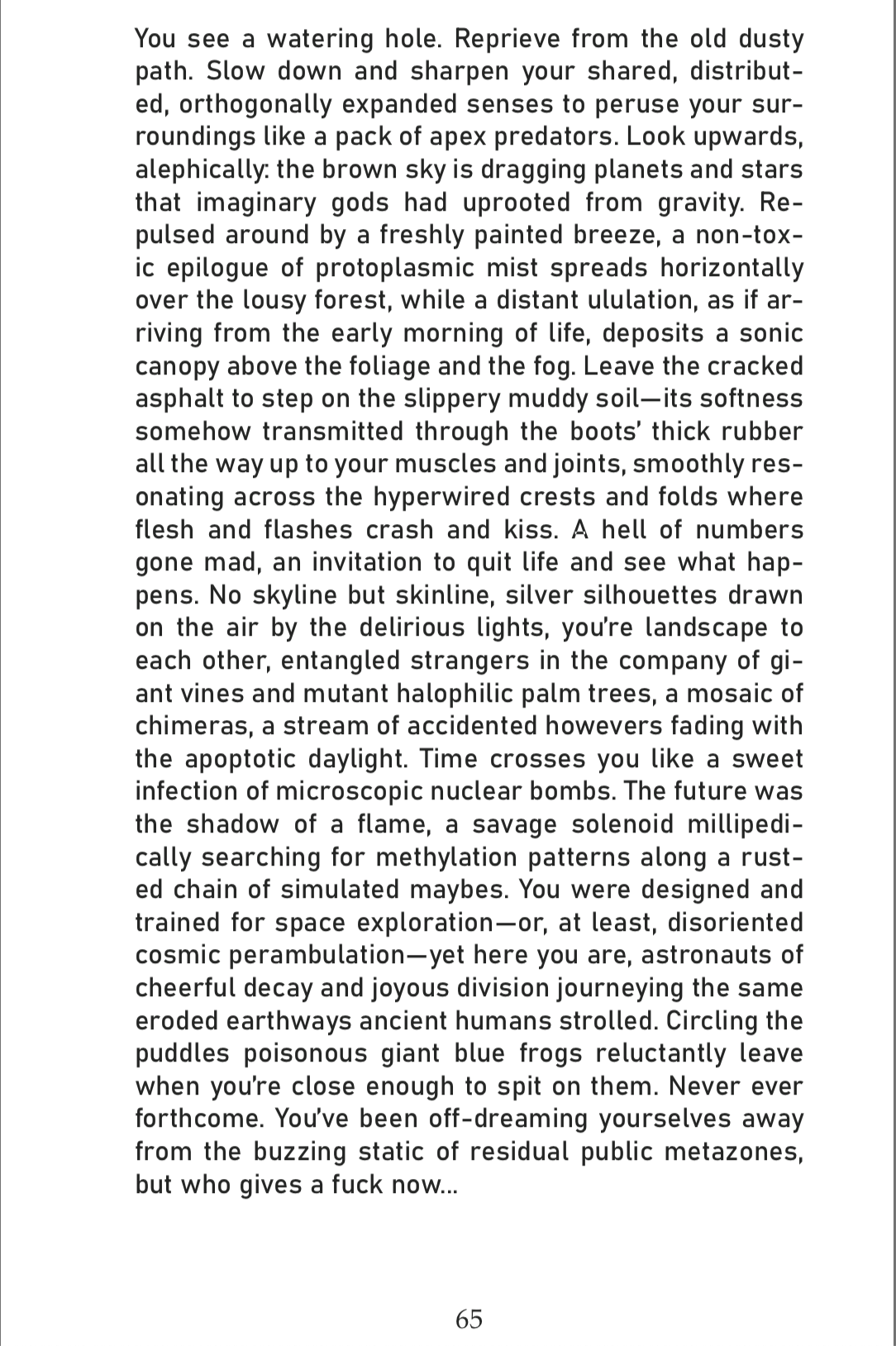
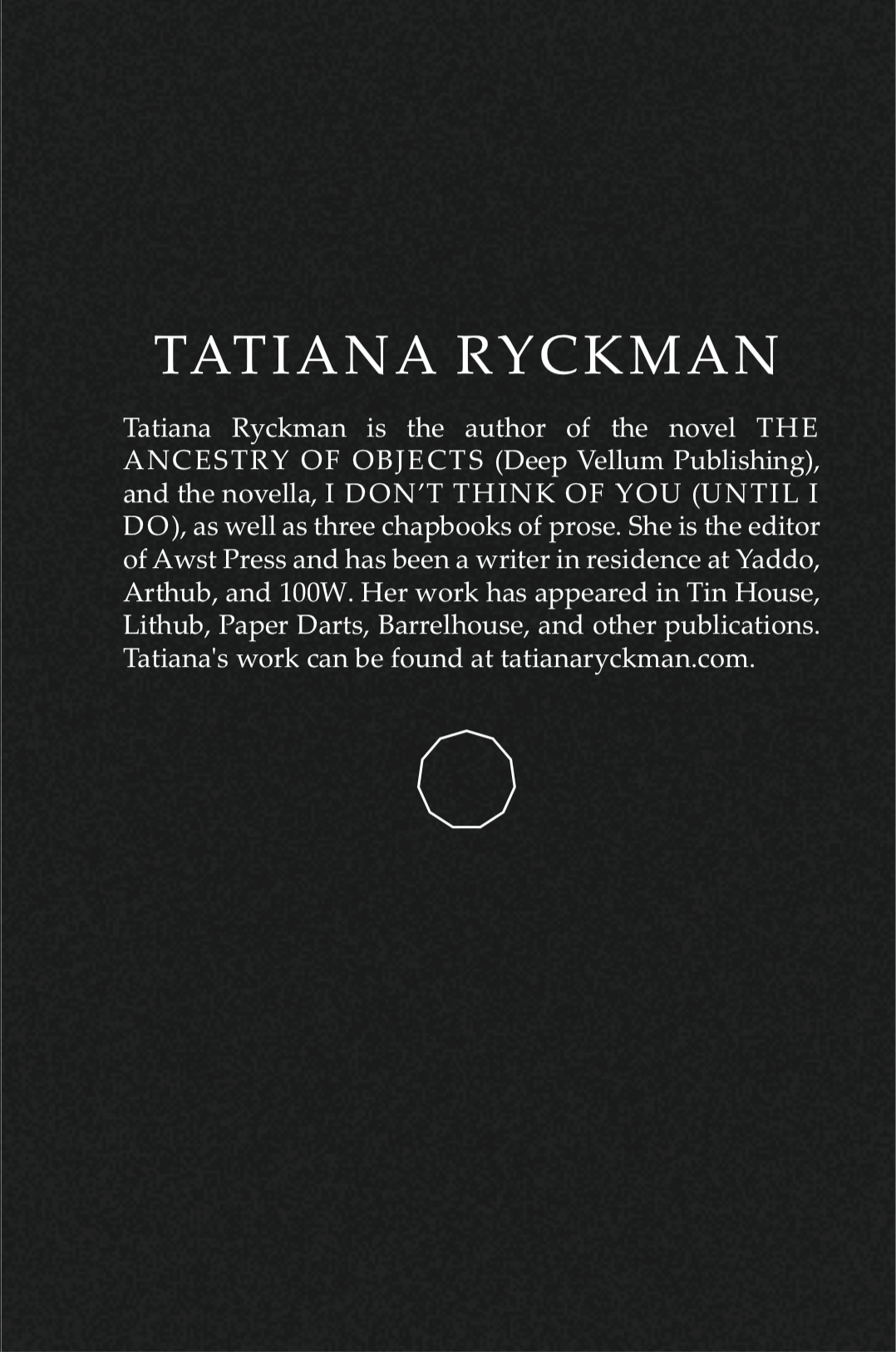


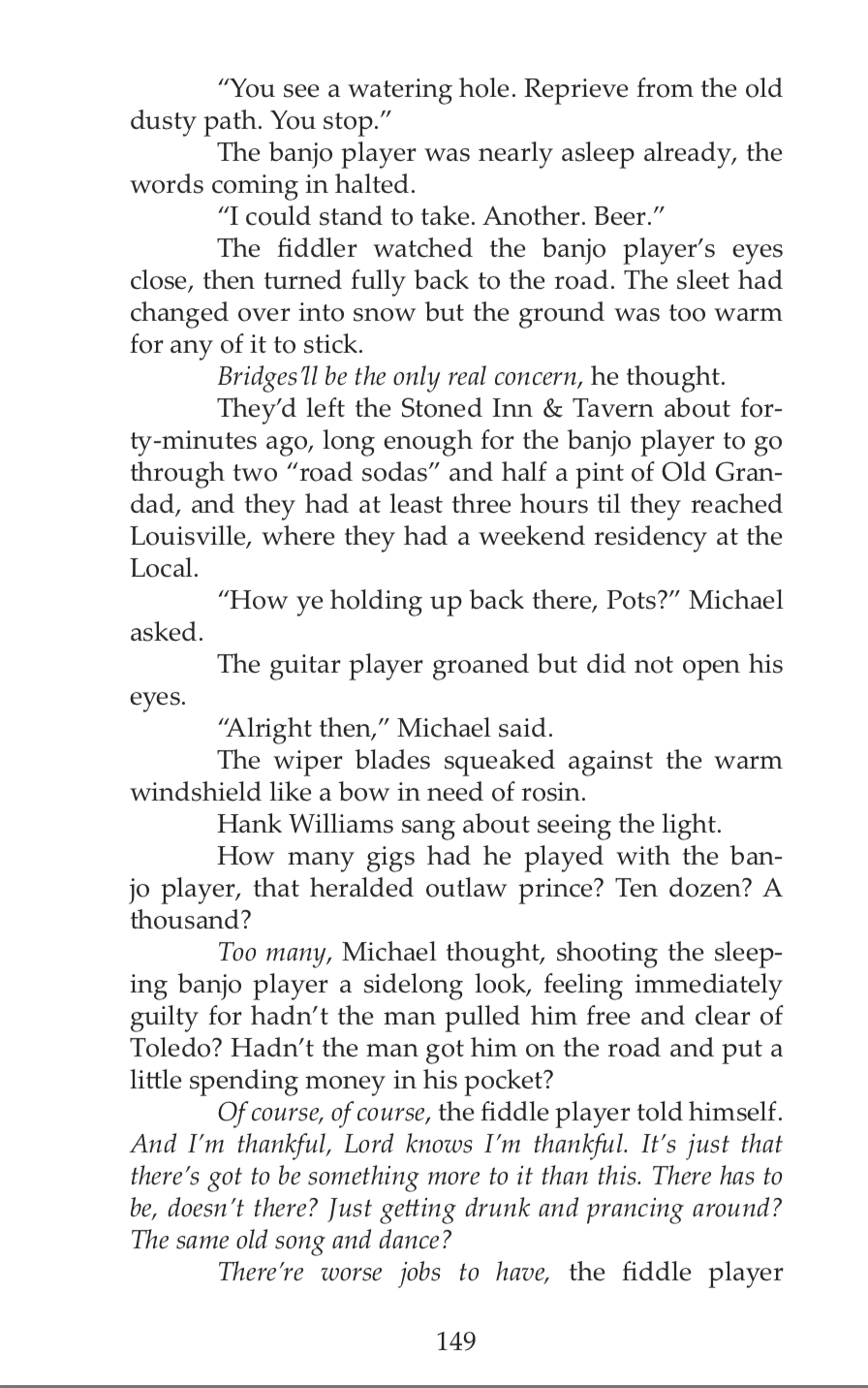
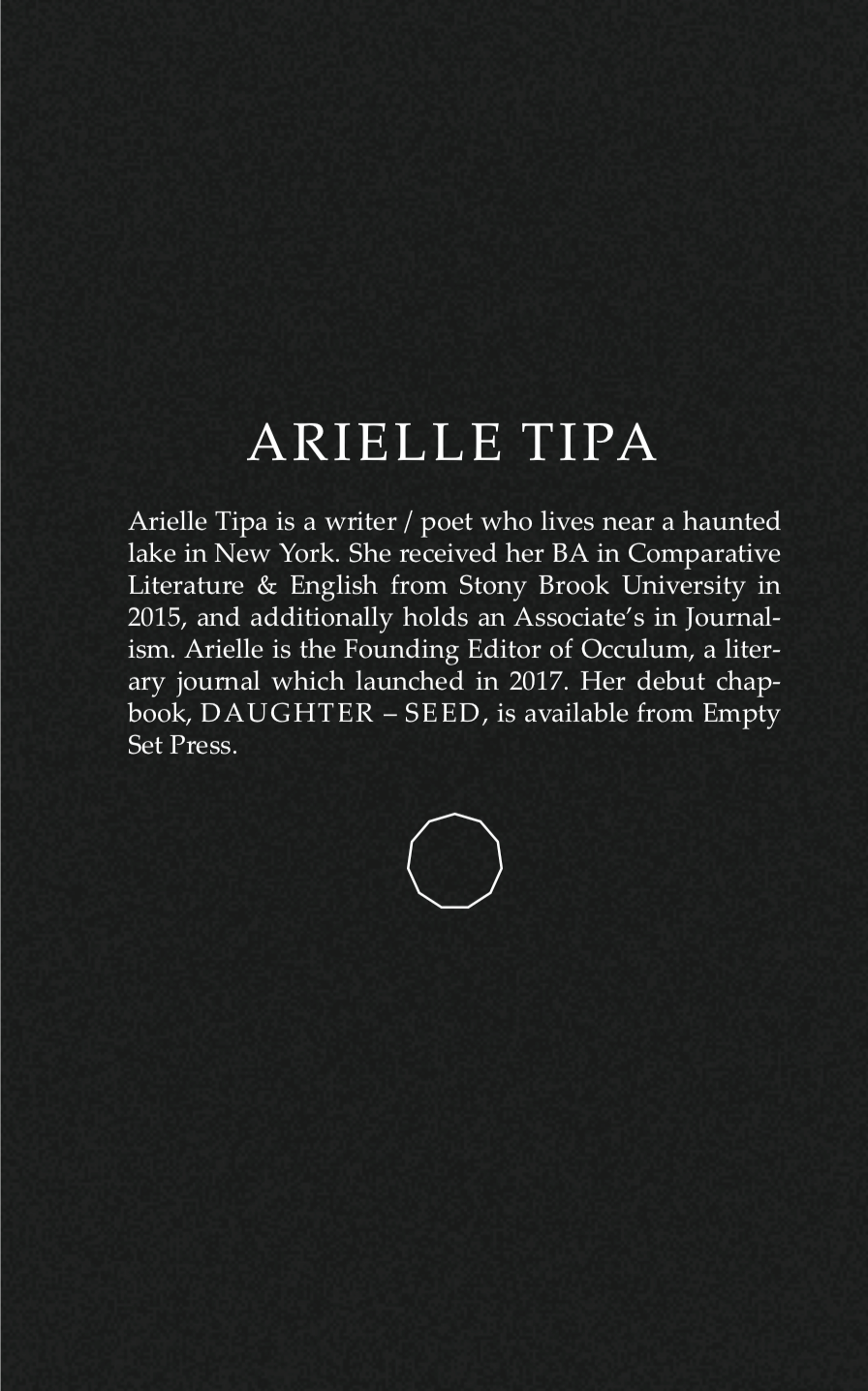

Extras
Collected Voices in the Expanded Field [Trailer]
Collected Voices in the Expanded Field LIVE
_______________

JOSHUA CHAPLINSKY: You’re still relatively young, yet you have over a dozen books under your belt, and that’s not counting anthologies you’ve edited and appeared in. What made you decide to become a writer so early in life?
CHRIS KELSO: I decided when I was about 18. I decided that I would forgo any prospect of making a viable living to write a book that was as good as Alasdair Gray’s, Lanark. I should have known that was an impossible, futile task. I also kind of blame writers like Dennis Cooper, Hubert Selby Jr, Burroughs, and Kathy Acker for making books seem anti-authoritarian and punk rock. For making books seem like tools of liberation from control. I also had a lecturer in Neoist pamphleteer Stewart Home who, after two meetings, pretty much encouraged me to chase writing and ditch uni. I was a demonstrably submissive teenager. I was tired of being so passive to authority so I wrote books. I didn’t even consider myself to be that young at 18. And I feel like I’m ready for the Tolstoy-stage of my career already. I’m ready to go on a pilgrimage and forget about punk rock. Writing has given me a mental age of about 75.
JC: I expect your art has been honed and has matured over the years. How has your writing changed since your first book?
CK: I’m ready to go on a pilgrimage and forget about punk rock. Writing has given me a mental age of about 75.
I used to write in a haze of anger. It was immature and unrefined, but maybe (if nothing else) passably authentic. I can’t even look at anything I wrote before 2016. I don’t recognise the angry little brat who wrote it. A pissed-off little incel with a broken ego, weary with affluenza. I think I take time now and I think I write more responsibly. As you get older I suppose you’re expected to. The themes are the same, I just tend not to attack them like a rowdy punk anymore. There’s less to prove.
JC: What draws you to writing challenging, sometimes experimental fiction? Is it the money? It can’t be the money.
CK: It is definitely not the money. It could be something as simple as the liberty from control it offers – a strategic means to achieve freedom from authoritarian systems. From social control, diluted-consciousness, from the prison of standardised language. I’ve never been interested in plot or characters. I think there’s more in the DADA collage or the agrammaticality of E.E. Cummings. It just appeals to something vital in me. Survival: a desire to distance myself from that castrated, timid little boy who is terrified of stepping outside society’s circle of conformity. I’m always trying to outrun him. The day he catches up to me is the day I write some moronic potboiler.
Chris Kelso Site
the dregs, by Matt Neil Hill
THE DREGS TRILOGY BY CHRIS KELSO: BOOK REVIEW
Author Interview: Chris Kelso – Vistas
Buy ‘The Dregs Trilogy’
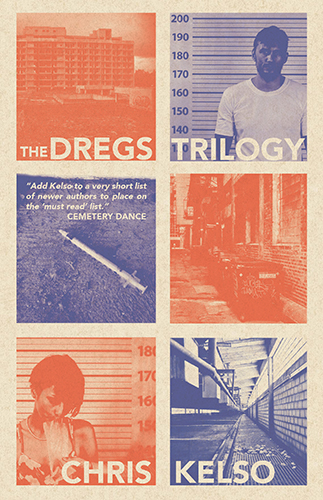 Chris Kelso The Dregs Trilogy
Chris Kelso The Dregs Trilogy
Black Shucks Books
‘From British Fantasy Award-nominated author Chris Kelso comes The Dregs Trilogy, a transgressive odyssey in three installments – SHRAPNEL APARTMENTS (Ginger Nuts of Horror Book of the Year 2017), UNGER HOUSE RADICALS (Ginger Nuts of Horror Book of the Year 2016) and RITUAL AMERICA – that will leave you dazzled, fascinated and shocked in equal measure.’ — BSB
‘If there is such a thing as weird fiction, then this is it, with a capital ‘W’’ — John Langan
‘A saxophone solo from the dark corner of a whiskey-soaked club, full of texture, haunting melody, and darkness.’ — Nate Southard
‘Someday soon people are going to be naming him as one of their own influences.’ — INTERZONE magazine
Excerpt
from 3:AM Magazine
The Carson-Bastard came to my rented apartment in Foshan and he knew to pay with a sandwich baggie of opium — it wasn’t Lu’s pharmaceutical-grade merchandise, but I was jonesing something fierce — and he knocked in a series of three knuckle-wraps to the beat of ‘We Will Rock You’ by Queen: I remember he hit a certain part of the stile for the first two ‘stomps’ then a different part for the ‘clap’.
*stomp, stomp, clap* *stomp, stomp, clap*
That’s what it sounded like to me anyway. Pretty deliberate.
I was into calisthenics back then and was in the middle of a pistol squat when the door went. I answered singing ‘You got mud on yo’ face. You big disgrace, kickin’ your can all over the place, singin…’ under my breath and there was the Carson-Bastard, just standing there, hard as a towel rack. I noticed he was white too, saw the clear bag of drugs, and let him in. At first I thought he might’ve been a dumb slum-tourist. But he was just a scruffy sonofabitch — an average-looking hillbilly in a tattered flannel shirt and pre-shrunk, sandpapered jeans. He forwarded the heroin. I thanked him and went instantly to prepare it.
“So where you from?” — I asked, knowing he was a southerner before a single syllable fell out of his mouth. He didn’t answer, just shuffled on the spot, all edgy and nervous. I decided to wait to take my drugs. The guy seemed to need reassurance and I initially felt a little sorry for him. He reminded me of a guy called Benny who worked in the one of Lu’s drugstores in the sprawl as a soda-jerk — quiet and jittery but prone to explosive fits of violence when cornered into an unfamiliar setting. I think it’s an autistic thing. Kid gloves, I assumed. I offered the Bastard a drink and he said he’d take a Blue Ribbon. All I had was a six-pack of Reeb. He took a can and glugged it down while I teased out the femoral vein in my groin.
“You want a hit to relax you? I’ll put it on your tab.” — I offered.
“I only take heroin in the ass.”
Fine, I thought, that’s fine.
So I dissolved the drugs into an oral syringe while he dropped his jeans and started lubing up his asshole with spit. The Carson-Bastard got on all fours, in a kind of Aztec push-up stance, and, to be honest, I was just relieved he was clean down there.
“Here it comes.”
And I inserted the dropper before carefully descending the plunger as if I were administering some anal antidote for Dengue Fever. He had a tattoo of a skull on his rear haunch that stared right through me. I watched the lining of his rectum change colour, from burnt umber to a field-drab-desert-sand colour. I watched his balls retract and he moaned a great moan of pleasure-relief. He arched his back and flexed his toes until the ankle cracked. His fingers clacked on the parquet flooring to what I thought was the beat of Stevie Wonder’s ‘Superstitious’, but upon reflection might’ve been Slayer’s ‘Raining Blood’. This only heightened my desire to try out his brand and method. The asshole suddenly became the stream in the peach orchard that leads to paradise. I wanted the drug to flow through me and manifest itself in musical tics. I slid my jogging bottoms down over my knees and got on all fours on the couch. The Carson-Bastard was flopped on the floor now, pawing at the air. His dick was out and still hard and, judging from his boner, I figured he might’ve laced the heroin with Viagra — it was a good size too, a little thin and curved like an overripe banana, but nice enough; the shaft was wormy with veins and he clutched it aggressively in an immense, hairy hand.
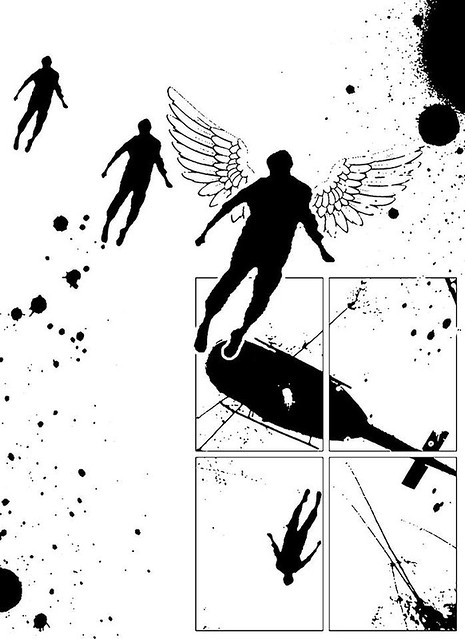
I started thinking this wouldn’t be such a hassle after all.
“Would you mind?” — I asked him, hoping he’d return the gesture out of courtesy.
“Sure, I guess.” — He was less anxious now. I waited patiently with my back to him, ass presented high in the air, expecting the warm numbness to sweep its way up my abdomen and hit any minute. That’s when I felt the serrated knife edge graze the skin of my ball sack. Before I know it my head’s being yanked back hard and the Carson-Bastard has a fistful of my hair in his clutch.
“Don’t move.”
I tell him I wasn’t going to fucking move. He drags one of the knife-teeth along my sack and I feel it tear the skin ever so slightly. A dribble of warm blood trickles down my inner thigh.
“Got any CD’s?” — He asked.
I could barely get the words out of my throat. The blood ran to my knee and split off in red veins down over my shin.
“Got any fuckin CD’s” — He asked again, tugging my hair until the roots screamed.
“Over in the corner, next to the TV!”
He pulled me upright by the scalp and led me to the TV.
“Got any ‘Spengler’s Eulogy’? I haven’t heard the ‘sound’ in so long, it’s making me crazy.”
“No, I don’t think so man…”
“Well find me some sound collages!”
He threw me to the floor and I landed on my knees. A pool of blood formed on the floor. My dick wibbled around between my legs, half recoiled in fear. I had no idea what ‘sound collages’ were meant to be.
“Are they a band? ‘Sound collage’…a band?” — That’s how ignorant I was back then.
“You playin’ funny you fag? It’s the ‘sound’, you know the ‘sound’? I know your type, you’re slicker than owl shit.”
I could only whimper apologetically and suddenly the serrated knife edge slid beneath the hummock of my Adam’s apple.
“Please…please don’t kill me.” — I begged.
“Please don’t kill you?”
“Please…”
“I could kill you if I wanted. It’d be so fucking easy, so fucking easy. My family are all killers and rapists. That shit runs through my veins.” — To illustrate, he rolled up his sleeves and, with two fingers, patted his left forearm until a thick vessel surfaced. He mouthed a repeat of ‘through my veins’.”
“So, what do you want?”
“What’s that? What do I want?” — His voice broke to a squeal on the word ‘want’.
Then he stopped, retracted the blade and considered my question.
“What do I want? Good question” — the aggression had vanished and he slipped into a stage-whisper.
“Alfie, what do I want?”
How did he know my name? Maybe I came recommended. Maybe he was on a second wind from the heroin. It came in waves you see. The Carson-Bastard sat with his back to the couch. The knife had fallen by his side and he had a lazy grip over the handle. The window behind me led onto a retractable fire escape. I knew I had half a chance of escaping, as long as I timed the jump to the stairwell properly. I inched towards the window and the Carson-Bastard just stared sleepily into space repeating my question “what do I want?”
“They say you can hide from Blackcap if you burn all yours dreams. Dreams are like tracking devices. He can follow you. Why would you ever want to outrun him anyway?”
It was then that I saw it — the Carson-nose, the jutted jaw, those spherical fish eyes. There was never a family face so cosmically…inhuman. I got a feeling in my chest like a thousand spiders were scurrying about, rattling their pincers off the underside of my breast plate, twanging my arteries, replacing sinew with silk. I knew exactly which family he came from. The face we all used to fear as children. The scary spiders were back.
Back in Amber Acre, during another life, the Carsons were a reviled bunch. It seemed that the mean genes never thought twice about skipping a generation; they were all considered as detestable as each other. My old childhood friend William Bentley and I, we got the eldest son Jed, Beau’s brother, a two-year stretch, this is before they sent him away for killing an entire family.
You see, when Billy and I turned twelve we started experimenting a lot. We wound up taking pictures of roadkill, squirrels flattened to a tack at the side of the highway, dogs halved by long-haul behemoths — that sort of thing. Then we graduated to pictures of human bodies. We looked at Billy’s foster-dad’s old collection which he kept in a shoebox under his bed.
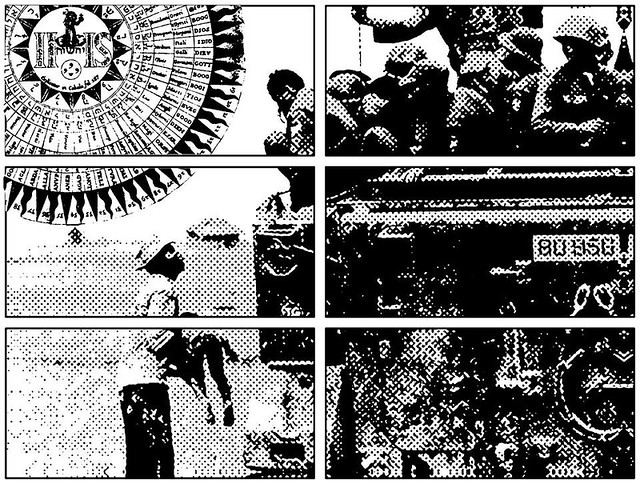
Our favourites were old Vietnam pictures:
A father offering the limp body of his child to a squad of apathetic South Vietnamese Rangers. Billy thought the picture was great because it showed how unfeeling the Kong was, even to each other. It was something he admired.

There was one where the corpse of a U.S. paratrooper, killed in action in the jungle near the Cambodian border, was being lifted by an evacuation helicopter and he looked like an angel ascending to heaven.
Extras
The Dregs Trilogy – Trailer
Chris Kelso // The Bell
*
p.s. Hey. ** David Ehrenstein, It’s a serious goodie, I agree. ** Misanthrope, ‘Splendid’! Well, thank you. Glad you were able to weasel away. Seems rude of Kayla’s mom. One time in the early 80s, my girlfriend (you read that right) of the time organised a big, secret birthday party for me at my apartment. I came home from somewhere, tired, in a bad mood, opened the door and, like, 30 people I knew and barely knew jumped out and proceeded take over my apartment and get drunk for hours until I lost my shit and threw them all out. I still think of that as one of the worst times of my life. Simple, effective gifts there, nice. Uh … did David score the gig? They’re still saying the temp will drop 8 to 10 degrees tomorrow, and they had better be the fuck right, that’s all I have to say. ** Golnoosh, Hi, Golnoosh! I’m very glad the post interested you. I really like ‘Daughters of the Dust’, and also especially ‘Four Women’ and ‘Illusions’. I hope your horrible heat dies tomorrow like ours is supposed to. Or even today in your case, dare I hope. I hope you’re finding all kinds of ways to make the heat seem un-annoying. ** Bill, Hi. Cool. Stick to ‘DotD’ and the earlier stuff. I knew or intuited that you like the early Quays. It’s a nice post. The maker did a good job. It’ll get here in, uh, a week and a half, I think. ** _Black_Acrylic, Hang in there, heat-beset bud. We had a glorious bout of thunder and lightning and sprinkling last night, but its aftereffects only lasted about an hour. Fucking nature, man. So selfish. So you head up to Dundee this weekend? ** Steve Erickson, I can’t speak for London, but Paris can get this hideous mugginess that makes every temperature feel 10 or more times higher. Good luck with that curious sounding track-in-progress. No thoughts on Julie Dash, Mr. film buff? I … don’t think I’ve done a post on Michael Almereyda. I have to say your description of ‘Tesla’ is not whetting my appetite. Especially that karaoke thing. And Ethan Hawke. But who knows. I’ll read your reviews ASAP. Everyone, Mr. Erickson has reviewed Matmos’ forthcoming album THE CONSUMING FLAME and the new album by Matmos dude Drew Daniel’s project Soft Pink Truth here. ** bonny finberg, Hi, Bonny! So nice to see you here. You just posted your email address and nothing else? Was that a clue? xo ** Corey Heiferman, Hi, Corey. I don’t know Musexplat or either of those bands, and my Spanish is very rusty, so I’ll go take advantage of the the lot, thank you! Well, I certainly am excited about your new blog project. Sounds very needed, yes indeed. I sort of very gradually eased into writing reviews and criticism. I wrote record previews for a local newspaper that hardly anyone read when I was in high school and then just kind of kept going until I was writing for actual places people read. I never completely felt comfortable doing reviews, or journalism either really, and I still don’t, or I didn’t when I stopped doing that altogether. I never felt comfortable foisting my opinion on people, although writing negative reviews were kind of fun, and I don’t think that kind of writing is suited to a nitpicky perfectionist type like me. Interested to read your critical voice. ** Okay. Today, as you already know, I’m showing you five books that I, yes, read recently and, yes, loved as a form of recommendation in your regards. Check ’em out. See you tomorrow.




 Now available in North America
Now available in North America 
Hey Dennis. Hope all is well is Paris. Great post today, looking forward to checking out The Dregs and Alice Knott, two great excerpts posted here today. Not much happening with my life. Going camping/canoeing with my wife today. I also won my match up in fantasy baseball last week so that was exciting.
I read Wrong last week and really enjoyed it. Have you ever read any of Camille Paglia’s essays on the Beautiful Boy in art and literature? Yr work often reminds me of some of her essays re the beautiful boy as creator/destroyer.
Cheers
Some really intense stuff today. Thanks.
Dennis, your girlfriend… ah yes, I remember you did a whole post about that on the old blog back in the old days…
My own recent reading, h’mm… I started the month finishing off THERE IS A GRAVEYARD THAT DWELLS IN MAN, an anthology of mostly old-fashioned supernatural ghost/horror stories edited by Current 93’s David Tibet. Then I read a re-release publication of Quentin S. Crisp’s short novel SHRIKE. More recently I read Mishima’s THIRST FOR LOVE, and re-read Cormac McCarthy’s NO COUNTRY FOR OLD MEN. There are some upcoming books I’m looking forward to, such as the new Steve Finbow title from Amphetamine Sulphate (which I just ordered before I came here)… oh, on eBay recently I managed to snag a copy of your own book IDOLS, filling another gap in my collection (this was the 1989 edition, not the original 1979 one).
I think I might be in love with Blake Butler.
Dennis, I just said to someone the other day…maybe Sypha?…that I had heard/seen anything from Blake Butler in a long time. And now here he is. Good selection today. And good too see Mr. Kelso getting some (more) love.
Hahaha, I’m just imagining that surprise birthday party. And yes, I remember you having a girlfriend. If I remember correctly you did a post that she was in long ago.
So yeah, everything turned out all right with the festivities.
Looks like David’s got the job. His third day today and he’s going back tomorrow. He seems to like it.
I’m typing this on my phone. My hard drive on my 11-year-old computer died last night. I was able to save my documents, pics, and music to my external hard drive and a thumb drive. A light bulb in David’s room burst and knocked out power in his room and my room. My computer was on, and it pretty much fried the hard drive.
A friend at work let me use his Costco account and I ordered what looks like a really nice computer at a discount. It arrives Friday. Fingers crossed.
Was that first picture Blakeb B? Then I’m with the beloved Derek!
Although I remember BB and I
had an argument about The Beatles.
I have a copy of The Dregs here waiting on my imminent perusal. Today’s post fills me with excitement.
Yes Dundee awaits on Saturday! Me and my brother are heading up there at the weekend to put all my belongings into storage for up to a year. The landlord is being cool and has offered to help move everything, so I hope it will be a fairly straightforward process. In and out like a military operation, plus the heatwave is forecast to be thoroughly gone by then too.
Hey Dennis! Ah yes, here are the aforementioned books. I really love Blake Butler’s writing, although I’ve only read Cloud Atlas, but I’m definitely interested in reading Alice Knott. Is he also a former comment writer on your blog? Also, Bill Clegg reps him too! Bill reps everyone I like–do you think it would be a little vulgar to send him my forthcoming Evergreen story, or would that come across as savvy/confident?
Thanks for all the nice things you said about my recent successes/accomplishments. You’re always saying really nice encouraging things, and I can be really hard on myself so I’m always grateful for the compliments. I wonder if this will become a problem for me as I get a little older though. My new boyfriend always showers me with compliments, and even though I appreciate him I think I’m getting a sort of sugar high from his comments…….It’s sort of Freudian with me, I grew up in a pretty repressed New England environment, Catholic school, distant father critical mother, and while I have gratitude and respect for my upbringing I also feel like I developed a weird way of relating to men. Should I just enjoy the affirmations now & deal with the consequences later? Have you ever felt this way in terms of career/romance?
Speaking of which I just filed a new book review today, and it turned out far longer than I expected, like ~3500 words, and actually I quote Diarmuid’s book in the review. I take a quote from Chapter 6, the New Narrative chapter. What I’ve read of the biography so far is great, Diarmuid is such a star, and so humble too. Anyway, my review turned out to be a negative review, so I’m a little worried I’m gonna make some enemies in the “queer lit” circles. Do you think that’s a legitimate fear? Should I throw caution to the wind anyway? I’m only going to live once as you said, and I suppose I need to pursue what I want even if it makes other lovers or other writers angry or offended or jealous, etc. Do you have any opinions on writing takedowns–for, against? You have some pans in your Smothered in Hugs collection, but I feel like you always manage to be sensitive to the artist or writer’s intentions, and so I tried to do that in my forthcoming one…
How’s your novel coming along? And how bout your film? Excited for both. Sorry to be a motormouth tonight 🙂 Looking forward to hearing back
Intriguing lineup today, Dennis. Chris Kelso, congratulations on the new book. Look forward to seeing more of the text/graphics interleavings. And to the new Quays post, of course.
I saw Tsai Ming-Liang’s The Hole again last night, 20+ years after my first viewing. Funny, there are so many parallels with what’s going on now. It starts with a newscast about an epidemic with flu-like symptoms, quarantine arrangements etc. The characters are all isolated and alone in their apartments. Then we have the titular hole. And those musical numbers!
Corey Heiferman, I sent you a friend request on chess.com. I’m BronsteinGroupie.
Bill
I didn’t say anything about Dash because I’ve only seen ILLUSIONS. That’s an excellent film, and I plan to watch DAUGHTERS OF THE DUST soon.
I finished “PAW (Cult of the Gish Gallop)” today. I had to put it through a filter to control the distortion, but that also toned its dynamics way down and made it sound fairly quiet. Here ’tis: https://soundcloud.com/user-229390367/paw
I also turned in the interview with OTHER MUSIC’s directors to Ira Robbins today. It should be published some time next week.